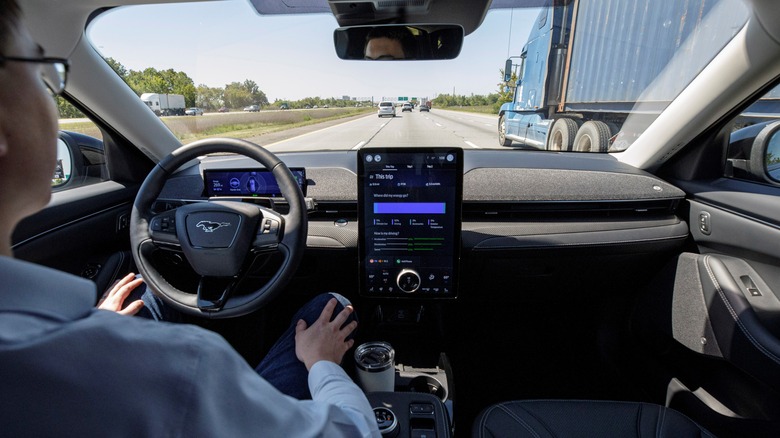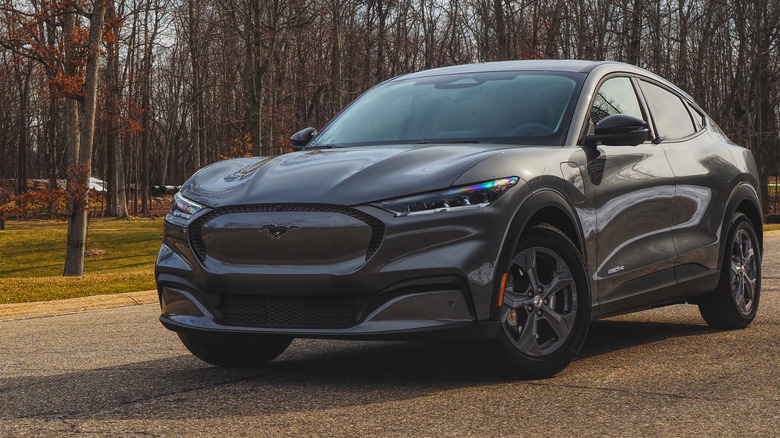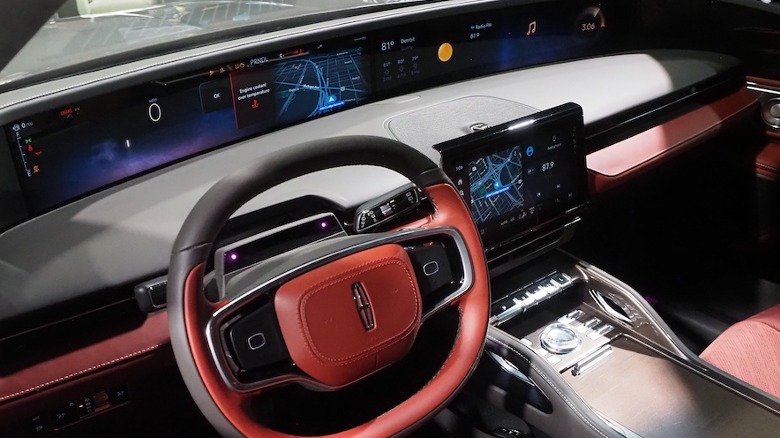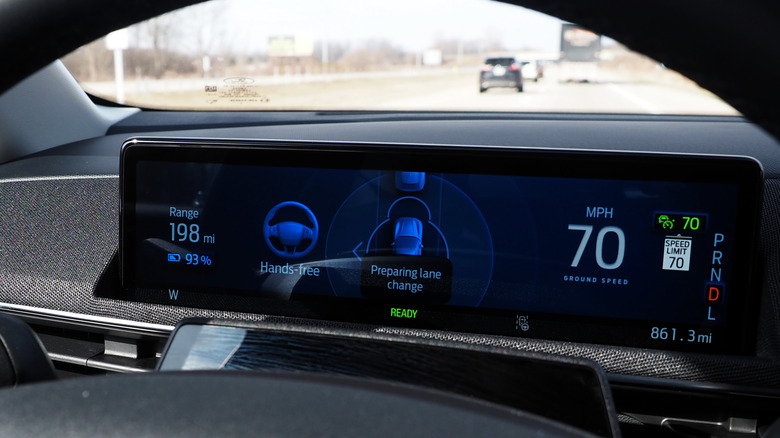Ford Is Making BlueCruise Hardware Standard: Why That's A Big Deal
Ford is making the hardware for its BlueCruise hands-free driver assistance standard on all Ford and Lincoln models that currently offer the Level 2 system, part of a push to give more drivers access to the technology and simplify the ordering process. Launched in 2021 on the Mustang Mach-E, Ford F-150, and Lincoln Navigator, BlueCruise combines adaptive cruise control with lane-keeping. However, it also allows the driver to take their hands off the wheel while the system is active, relying on a monitoring camera to ensure they're still paying attention to the road ahead.
Since its launch, BlueCruise availability has expanded to multiple new Ford and Lincoln vehicles, usually as a paid option or included on select trims. Since it requires specific hardware — such as the driver-facing camera — that meant new car buyers needed to decide in the dealership whether or not they wanted BlueCruise as a feature.
Ford is now switching that up, by making BlueCruise hardware standard on those vehicles. Having already done that on the Mustang Mach-E, it'll now mean all model year 2024 Ford F-150 Lightning, Ford F-150, and Ford Expedition, plus all 2024 Lincoln Navigator and Lincoln Nautilus — and select trims of 2024 Lincoln Corsair — where BlueCruise is available will be hardware-ready for the driver-assistance system. Buyers will get 90 days of BlueCruise functionality for free, to test it out.
A more flexible monthly BlueCruise plan
While removing one uncertainty from the already-stressful car buying process is a welcome move from Ford, the decision to preinstall BlueCruise hardware has broader implications than simply to streamline how new vehicles are configured. It also allows the automaker to experiment with new ways to offer BlueCruise functionality, particularly for those drivers who might not necessarily think they'll require the system frequently.
For example, if ordered from the get-go, BlueCruise on a Ford vehicle costs $2,100 for three years of service. However, after the complimentary trial, BlueCruise can be activated for $800 per year, or on a monthly plan for $75 per month.
For Lincoln vehicles, Navigator and Nautilus buyers get four years of BlueCruise service if purchased with a new vehicle. Alternatively, post-delivery activation will be the same $800 per year or $75 per month.
The monthly plan for all vehicles has no minimum commitment and can be activated and deactivated multiple times. For example, drivers could pay $75 to have BlueCruise functionality for their summer road trips, deactivate it for the fall, reactivate it for the December holidays, stop the subscription at the end of that month, and then repeat the whole thing again the following year.
A much bigger audience for BlueCruise
Overall, it should mean BlueCruise getting in front of a whole lot more drivers than is currently the case. In fact, Ford says it estimates it'll build the hardware into around 500,000 model-year 2024 crossovers and trucks. Arguably just as welcome, activating and deactivating BlueCruise service won't require contacting a dealer: the current subscription package, and any renewal, will be handled by the FordPass App.
For those times when BlueCruise isn't active — either between subscription periods or because the vehicle owner never activated BlueCruise in the first place — there'll still be adaptive cruise control functionality. That will mean the Ford or Lincoln can maintain its speed and distance from the vehicle ahead, but the driver will be expected to keep their hands on the steering wheel.
Earlier this year, Ford rolled out BlueCruise 1.2 with support for lane-change assistance. Later in 2023, BlueCruise 1.3 is expected to roll out with improvements in performance around curves and in narrower lanes. It will begin deployment on the 2021-2023 Mustang Mach-E.



